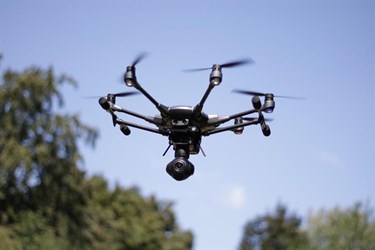IDC Expects Asia/Pacific excluding Japan Spending on Robotics to Reach US$129.4B in 2022
The latest IDC Worldwide Semiannual Robotics and Drones Spending Guide forecasts Asia Pacific excluding Japan (APEJ) spending on robotics (including drones) and associated services to reach USD 129.4 billion by 2022, essentially three times the spending in 2018, with a five-year CAGR of 25.2% during 2017-2022. APEJ tops with the largest market share for robotics applications followed by the United States and Japan. Both are expected to record for more than 61.6% of the world’s entire robotics market in 2022.
"To survive the escalating competition, APEJ manufacturing organizations surveyed by IDC in 2018 are putting robotics as their top priority for technology investment," said Dr. Jing Bing Zhang, Research Director for Worldwide Robotics at IDC. “While the uncertainty of the trade war between the United States and China is likely to dampen the market growth in the near term, we expect the growth trend to pick up from 2020 onward.”
Discrete and process manufacturing are the dominant industries in robotics (including drones) spending, which turns over 58.1% of the overall spend in APEJ in 2019. Largely, welding and assembling use cases in discrete manufacturing, whilst pick and pack, and bottling use cases in process manufacturing are driving the robotics spend in 2019. However, customer deliveries, vegetable seeding and planting are the drone use cases which we expect to grow at fast pace with a five-year CAGR 126.4% and CAGR 112.1% respectively over the forecast period (2017-22).
“There has been an intensive wave of industrial automation for which robotics and drones provide a major base; hence attracting investments with each passing year. Under Robotics, despite Manufacturing being a dominant industry in this area, investments will continue to increase in resource industry, retail, construction, among others,“ said Swati Chaturvedi, Senior Market Analyst at IDC.
“On the other hand, drones, which are majorly a consumer-oriented technology, are gaining momentum in its industrial usage by enterprises and governments alike for tasks as mundane as filmmaking and inspection or as complex as agricultural uses, mining operations assistance, and insurance assessment.”
From a technology perspective, hardware purchases related spending on robotics systems (including drones) in APEJ, which includes industrial, service and consumer robots and after-market hardware, is forecast to grow to $81.0 billion in 2022.
China accounts largest market share in the Asia Pacific robotics (including drones) market. Its spending on robotics is expected to reach $80.5 billion, representing 62.2% of APEJ region's total spending in 2022.
在线留言询价

New standards provide public assurance on safety, security and etiquette for use of drones

Robot Changes Skins to Change Its Moves

Roomba’s Father Says Robots Will Evolve
- 一周热料
- 紧缺物料秒杀
| 型号 | 品牌 | 询价 |
|---|---|---|
| CDZVT2R20B | ROHM Semiconductor | |
| TL431ACLPR | Texas Instruments | |
| BD71847AMWV-E2 | ROHM Semiconductor | |
| MC33074DR2G | onsemi | |
| RB751G-40T2R | ROHM Semiconductor |
| 型号 | 品牌 | 抢购 |
|---|---|---|
| IPZ40N04S5L4R8ATMA1 | Infineon Technologies | |
| BP3621 | ROHM Semiconductor | |
| TPS63050YFFR | Texas Instruments | |
| BU33JA2MNVX-CTL | ROHM Semiconductor | |
| ESR03EZPJ151 | ROHM Semiconductor | |
| STM32F429IGT6 | STMicroelectronics |
- 周排行榜
- 月排行榜
AMEYA360公众号二维码
识别二维码,即可关注
























